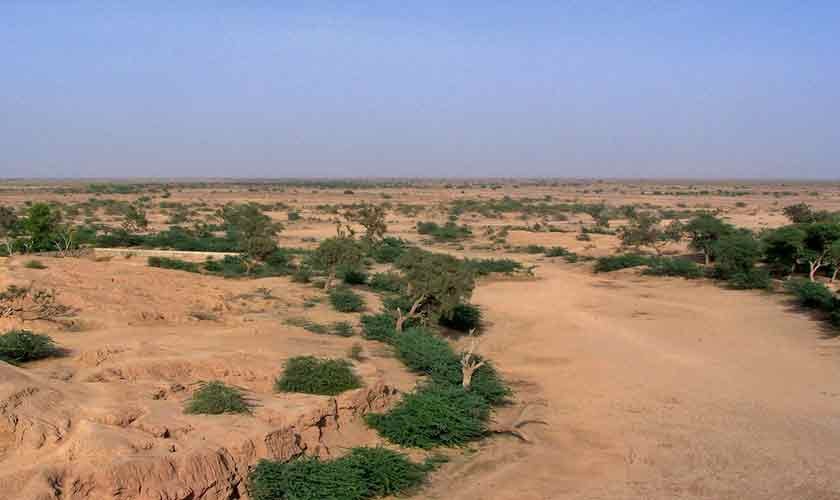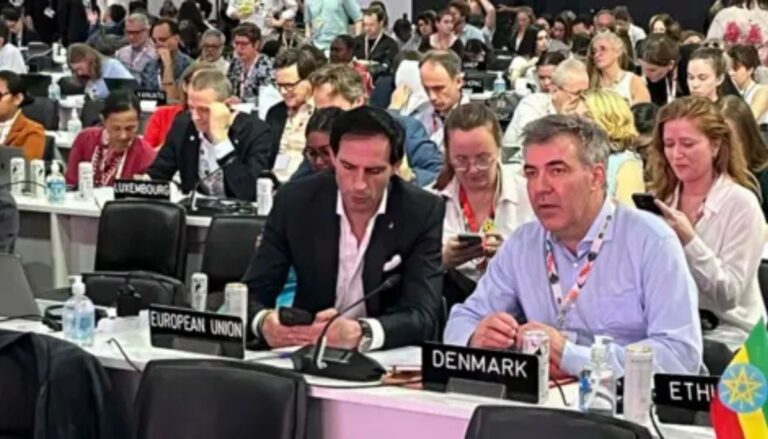
#Irrigation #canals #ghost #imperialism #Political #Economy
Under the Green Pakistan Initiative, a donkey protest is being organized against the federal government’s plan to construct six new canals, which aims to convert the barren land into fertile fields.
Although the government has set up the project in order to modernize agriculture and economic development, many people in Sindh see that this is another chapter in a long and tragic history of resources and regional backwardness. The Canal Project has revived historical complaints and has caused widespread screams – not only because of water concerns, but because it reflects the inequality patterns in the colonial period.
To understand the political resistance against this project, one must go under imperialism by Punjab, the important work of historian Ali. Ali said that under the British colonial rule, how widespread irrigation and settlement projects were transformed into a promoted agricultural center by Central and West Punjab. The colonies of the canal were engineered by extensive control of rivers, loyalists allotment of land and forced resettlement, all designed to serve the royal economic interests.
Punjab benefited inappropriately. The central control over the water of the colonial state, allowing it to transfer the resources to the preferred zone, which creates a structural imbalance that remains intact to this day.
However, most people in Sindh disagree. They fear that the Indus Basin Waters System is already under pressure and critical. In many regions, the availability of water has reduced demand and the Indus Delta-once a stimulating ecosystem is falling due to reducing the flow.
Ali’s analysis considers it not only a policy dispute but the basic question of justice. The agricultural extension in Punjab appears to come to the price of Sindh. It is justified by the promises of national prosperity. But who describes prosperity? And who affords the price?
Like the colonial period, the state is seen to control the water without meaningful consultation by the Council of Commonwealth. Before proceeding, let’s set the debate in the colonial context.
During the British colonial rule, the people of southern Punjab had long hoped for a canal system built in upper Punjab. The first suggestion of such a canal is in-1873 to irrigate the Indus Jelm Dab. For decades, no progress has been made on this proposal. In 1901, the Sindh Sagar colonial Act granted the rights of Punjab to about 1.9 million acres in Leh in exchange for irrigation promises. However, due to the resistance of the lower levels and the apathy of the central government, the land remained dry for another generation.
In 1919, the proposal to irrigate the dumbbell was also fallen through a large canal. The British government approved the score barrage in Sindh in 1923. Punjab protested the decision, and discussed its own water needs.
In 1924, the Punjab government proposed three alternatives. However, the British preferred the score barrage. Even the minor low -taller project, which was presented in 1925 with the proposed canal of the capacity of 6,750 cusecs, was not constructed. (British) The Indian government refused to recommend it for approval until the score project was completed and operational.
This resulted in a long controversy that included several colonial administration. Finally, in 1929, the Indus Discharge Committee decided against allocating water for Tal, which recommended another decade. The overall failures to secure the water faced frustration for the farmers of southern Punjab, which strengthened the feeling of neglect by the authorities living in Lahore. The Sindh Sagar Doab Colonial Act was finally canceled this year, which marked the end of the incomplete promise.
The Punjab government never fully abandoned the idea of the entire canal. During the operation of the Anderson Water Distribution Committee, there was a chance in 1935. The committee allowed Punjab to move forward with the construction of the canal, allowing the return of 6,000 cusecs, with specific seasonal limits: 2,000 Cusec in December and January, 3,600 in February and March and 5,600 in November. The Thaal Canal was completed in 1947. Its purpose was to irrigate 1.6 million acres of land with Condin – fragrance and Condin – Sharashah Railway Corridor.
In making a long post-70-year sense of rhythm canal-it is the thing that upper repair regions like Punjab have historically faced challenges and frustrations over the distribution of water. However, when it comes to the construction of the Greater Thale Canal, there is an impression in Sindh that the project enables Punjab to pull more water from the Indus River from its correct shares. This impression continues to promote water equation and equivalent water access dispute.
The political result has been huge. On March 4, the Human Rights Commission of Pakistan condemned the use of force against students protesting in Jamshoro. Earlier, Zulfiqar Ali Bhutto Jr., the grandson of the late Zulfiqar Ali Bhutto, who led the Bilan Rescue movement, joined the farmers and civil society in a sit -in in the score. Although the leadership of the Pakistan Peoples Party (PPP) has expressed opposition, the current government and the establishment have been reluctant to counter directly.
Beyond politics, the economic logic of the Cholistan project has been fought. It has been argued that the romance of bending deserts ignores environmental facts. The availability of water in Pakistan has decreased from more than 5,000 cubic meters per capita in 1947. In Sindh, the figures are even less. Climate change, snow melt and outdated irrigation system have played an important role in the crisis. Even a small amount of water is at risk of turning new projects, increasing poverty and displacing communities in minor areas.
There are also concerns that the dangerous environmental system is threatening before changing the natural flow of Sindh. Some environmentalists have warned that at least 5,000 cusecs are essential to protect the Sindh Delta. Without the minimum flow, the region is at risk of cutting and decreasing important wet areas. For this part, Cholistan may soon suffer from moisture, water wood and environmental decline.
What makes this project particularly dangerous is that it reinforces the impression of federalism that removes from it: a development model that benefits a region at the cost of underers. Instead of promoting national unity through a joint growth, the Cholistan Canal can deepen the distribution internationally and maintain a rating of privilege.
A fair and sustainable water policy should be developed on environmental facts. It should also take into account historical complaints, empower all provinces and guide through a comprehensive federal mechanism like the CCI. Technologies like drip irrigation, canal maintenance and data -driven water governance can help, but only if implemented with equity, not expanding, as a guidance principle.
Protests on the Cholistan Canal Project are not just about irrigation – it is also about what kind of Pakistan is to be done by the Federation. The answer is not only in the policy documents but also in the canals that we choose to prepare the dates that we choose to remember.
The author is a professor at the Faculty of Liberal Arts at the Beacon House National University in Lahore.






